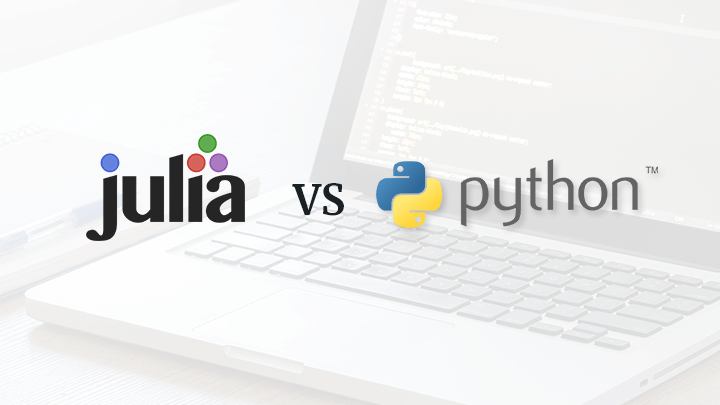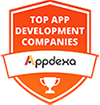Today in the tech world, there is a kind of debate going on over the significance of two prominent programming languages. Tech experts are constantly discussing the efficiency of one programming language over the other. And here the tug of war is going on between Julia and Python. Yes, there are many arguments going on over which programming language is better than the other and how. There are questions like which one of the two should be used for data science or which one between these two is more versatile. Here, in this article we will be drawing a comparison of sorts between Julia and Python programming languages.
So it has been since years that Python has been successful ruling over the hearts of the programmers owing to its many advantages. Presently, it is even rated as one of the most prominent programming languages and one of the reasons for the same is its simplicity and this is why most of the beginners tend to use it as an ideal landing platform. In fact the versatility of Python makes it an ideal choice for the seasoned developers.
Meanwhile, Python is not solely used for the development of apps, but it is a preferred choice as a programming language for data analysis and data machine learning. Now, where Python is incredibly popular and its growth has exploded in recent times, Julia as well is making a mark of its own slowly but steadily. Though comparatively, it is a newer language, it has garnered lots of appreciation it’s way recently. Also one of the researches has shown it as one of the top 50 popular programming languages and some are even choosing it over Python.

A sneak-peek into Julia: Julia as a programming language was founded by a set of tech-experts, namely Virall B Shah, Stefan Karpinski, Jeff Bezanson, Keno Fisher, Alan Edelman, and Deepak Vinchhi, and it was in 2012 that it was made available to the programmers. Then it was in 2018 that this programming language debuted with Julia 1.0 being released officially. This way, now this language has progressed from being at ‘developer’s stage’ to ‘now an expert’. As per its creators, this free & open-source programming language was created by them because they are greedy and want more.
This is what the statement says, “We want a language that’s open-source, with a liberal license. We want the speed of C with the dynamism of Ruby. We want a language that’s homoiconic, with true macros like Lisp, but with an obvious, familiar mathematical notation like Matlab. We want something as usable for general programming as Python, as easy for statistics as R, as natural for string processing as Perl, as powerful for linear algebra as Matlab, as good at gluing programs together as the shell. Something that is dirt simple to learn yet keeps the most serious hackers happy. We want it interactive and we want it compiled.”
Now let’s begin with the comparison between the two.
Comparison between Python and Julia
Julia: First unveiled in 2012, this programming language finally made an official launch last year, and its primary motive was addressing shortcomings of the other programming languages, even Python. While developing it, its creators had in mind to utilize the strongest aspects of the rest of the programming languages, like speed & openness. Today, programmers mostly use this language for scientific computing & data processing.
Also Read: Flutter vs. React Native vs. Ionic Which is better your App?
What are the unique features of Julia language?
Here we have mentioned a few of them:
- Julia can easily access the libraries of other programming languages, like Python, Fortran, & C.
- Julia supports metaprogramming and it can be used for the creation of other of Julia programs that have their unique codes.
- With this dynamically typed language, you don’t need specifying or signing the variables.
- Julia has an upfront syntax which can be easily understood by newbies. In fact, its syntax is pretty similar to Python.
- Julia is compiled and is not interpreted. This programming language is categorized as just-in-time (JIT), and this is compiled by the LLVM framework. With no interpretation, Julia is one of the fastest programming languages, with its speed being compared to one of C languages.
How Julia is better than Python?
These are the reasons that will make you pick Julia over Python:
- Parallelism: Both Julia & Python use parallelism for resource management. Still, Julia, when compared to Python, is less heavy in terms of resources used by it.
- Math-oriented syntax: Julia’s language was created mainly for scientific computations that are useful in a mathematical scenario. Julia’s syntax is pretty similar to the mathematical formulas which are usually used for the other mathematical operations instead of just computing. Because of the same, Julia can be understood easily by the non-programmers.
- Automatic memory management: In the case of Julia, there is no overburdening with tasks of freeing up & allocation of memory. Instead, the language will do these tasks for you. Here Julia offers effective ways for the garbage collection. Meanwhile, this feature is also present in the Python language.
- Speed: Even in its default state, Julia is much faster as compared to Python and it is certainly because Julia is using both type declarations & JIT (just-in-time) compilation. Here the unoptimized versions of the Python programming language can nowhere match Julia Language’s speed. However, Python’s speed can be boosted with the use of third-party compilers, like PyPy and other of the external libraries.
How Python is better than Julia?

These are the reasons that will make you pick Python over Julia:
- Julia is still new: Julia was made available to the programmers in 2012, and its official release was only in 2018, which was last year. Hence, it is very much a new language on the block with limited features. Whereas Python has been present for decades and it is even backed by years of R&D (research and development).
- Compatibility: Python has the support of more third-party libraries & software as compared to Julia.
- Community: As Python has been present much before Julia, hence it certainly has the support of the bigger community, whereas Julia as quite a small community and it is still at the infancy stage.
- Array index begins from 1: In Julia, the arrays are 1-indexed, however, that is not the case with Python, and in this manner the first element in an array is zero (0) and not one. Due to this feature, Julia is at loggerheads with most of the mathematical applications.
Final Note: This above comparison makes it pretty clear that both Julia and Python has a very close relationship. Now the one working in your favor should be your chosen programming language. All that is required is learning and sharpening your skills of these programming languages and then it can be used to attain your objectives.















